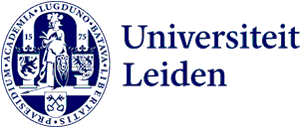In Asian archaeology, the reconstruction of past landscapes is an important Current Issue, as a means of identifying and reconstructing the “own” past. This course will focus on the social context of archaeology in Asia: the search for identity in the archaeological record. It will deal with archaeological evidence related to the visibility of various forms of interaction and contact (for example military, economic, religious), and cultural diversity and ethnicity in the past. The course will also assess how this evidence is perceived by and dealt with, by archaeologists, anthropologists, politicians and interest groups. The emic versus the etic perspective is taken into account. The origin of the Ainu in Hokkaido, their historical interaction with the mainland Japanese, and their position in Japanese society today, will be taken as one case study. During each seminar, texts and articles will be discussed and evaluated. Furthermore, the assignment includes choosing a case study of a specific case of multiple Asian identity or ethnicity in the archaeological record, and the way it is dealt with in modern society, and presenting this in a powerpoint presentation, followed by a paper.
Admission requirements
BA degree (or equivalent) in Archaeology or a relevant discipline. (As the theme of this course is complementary to the course “ Identity and Landscape in Asian Archaeology”, participation in the latter is advisable).
SAP and exchange students: admission after approval by the Graduate School of Archaeology.
Learning objectives
*Knowledge of the background of the social context of Asian archaeology (the history of archaeology; colonial versus nationalist archaeology; identity and ethnicity; emic/ethic-discussion); *A deeper understanding of the archaeological practice of the reconstruction of past landscapes; *A deeper understanding of various practical examples of different identities and ethnicity in the archaeological record, and types of evidence; *A deeper understanding of the ways in which this social context is applied to interpretation of the archaeological record; *A deeper understanding of the various ways in which such evidence is interpreted, and their impact on society; *Be able to give a powerpoint-presentation; *Be able to critically assess the different papers and voice one’s own opinion; *To be able to write a paper on this subject, with expression of a critically assessment of the literature and one’s own well-argumented opinion.
Method of instruction
Seminar.
Examination
<span arial="" en-gb="" font-family:="" font-size:="" lang="EN-GB" line-height:="" mso-ansi-language:="" normal="" style="\"FONT-WEIGHT:"><font color="#000000">
<span en-gb="" font-family:="" helvetica="" lang="EN-GB" mso-ansi-language:="" style="\"FONT-SIZE:">Active participation and discussion of the texts, Powerpoint presentation & paper(s).<?xml:namespace prefix = o ns = \"urn:schemas-microsoft-com:office:office\" /?> </span>
</font></span>
Required reading
Various chapters from Hudson, M., 1999, Ruins of Identity, plus assorted other articles and book chapters.
